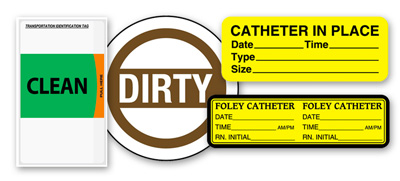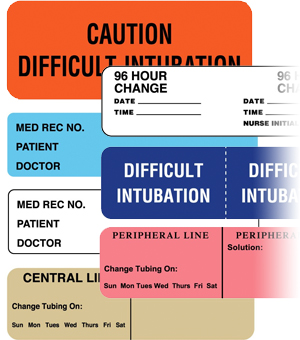It’s true that surgical facilities enable the clinical staff to perform routine surgeries and complex routines quickly and effectively. In fact, improved technology and procedures have transformed complicated operations into routine procedures. But, they have also created additional patient and staff safety challenges. For example, operating rooms account for 70% of hospital waste, increasing healthcare costs and create environmental hazards. Plus, the environmental hazards impact more than the patient and staff in the surgery suite. They can create additional risks for patients and staff throughout the facility.
Common Patient And Staff Safety Challenges
Although “never events” get the headlines, they represent a small fraction of the patient and staff safety challenges healthcare providers face during surgery. Injuries from cuts, pricks, electrical shocks, burns and falls are all too common; as is the exposure to body fluids and the potential infection challenges they create. Not to mention disinfectants and other cleaning and sanitizing agents that are designed to prevent problems but can cause adverse reactions.
Furthermore, IV lines also represent an operating room patient safety challenge. Medication dispensing through multiple IV lines create complexities in the surgery suite just as they do in a regular patient room setting.
Compliance Labeling Standards In Healthcare
In 2003, The Joint Commission published the Universal Protocol (UP) in an effort to bring a systematic approach to patient safety in the OR. The UP focuses on events related to the wrong person, wrong procedure, and wrong-site surgery, and includes issues that are addressed in many safe surgery checklists.
But, effective compliance includes more than the UP. For example, The Joint Commission requirements for surgical operations specify that organizations reduce the risk of infections associated with medical equipment, devices and supplies.
In addition, safe medication dispensing and proper handling of and protection against biohazards are also part of TJC compliance guidelines.
Communication labels are a common component of effective compliance patient safety processes.
How To Improve Patient Safety
In fact, applying the same systematic approach established in the UP to these additional TJC requirements improves patient safety and reduces staff injuries.
Personal Protective Equipment
For example, the PMC reports that a blood or body fluid splash occurs in nearly 50% of surgeries. The sudden splatter of a body fluid to the eye, nose, or mouth carry potentially severe consequences to unprotected medical staff. And although it’s common to use personal protective equipment (PPE) such as gowns, masks and gloves, eye protection is less common. Yet, PPE is clinically proven to reduce the spread of infection. In fact, one study found that healthcare workers that wore PPE during patient contact saw an 80% decrease in bacteria colony-forming units (CFUs).
Sterilization And Disinfection
Sterilization and disinfection are critical to infection prevention. But, depending upon the medical devices, choosing a method of disinfection remains difficult. However, for items such as surgical instruments, implantable medical devices, and more, there are steps that ensure the item is cleaned and disinfected properly.
Autoclave labels provide visual evidence that an item is ready for use. The label stays adhered to the item during the sterilization process. And, it changes color once the proper sterilization level is achieved.
But, medical devices that accompany a patient may not be monitored as closely. For example, is the same IV pump from the floor moved into a surgical suite? Is it draped and completely sterile? And, do you require this process and enforce it?
Medication Dispensing And IV Tubing
Furthermore, the challenge of IVs doesn’t stop with the sterilization process. For example, managing multiple IV bags and lines is complex in a regular patient setting. But, that complexity compounds during a difficult surgery.
According to a report in Pharmacy Practice News that analyzed errors associated with multiple IV lines:
- Infusion rate or line mix-ups, IV lines not attaching to patients, and errors associated with piggyback infusions were the most common errors associated with multiple IV infusions
- High-alert medications were involved in 71% of all multiple IV infusion errors and 92% of all IV line mix-ups
- Using the National Coordinating Council for Medication Error Reporting and Prevention, 48% of incidents were categorized as harm score D or greater, and 6.2% were categorized as harm score E or greater
- Nearly all (95%) of the errors reached the patient
Without ongoing vigilance, hospitals risk a sentinel event. However, when the systems design and internal protocols include IV line and identification labels, a reduction in IV line medication errors can occur. IV line and identification labels assist the medical staff and guide the right dose at the right time by the right route.
United Ad Label
UAL’s in-depth knowledge of hospital processes, procedures and protocols, allow us to provide healthcare labels that enhance patient safety, maintain compliance and improving clinical outcomes. Contact us to learn more about our services.

